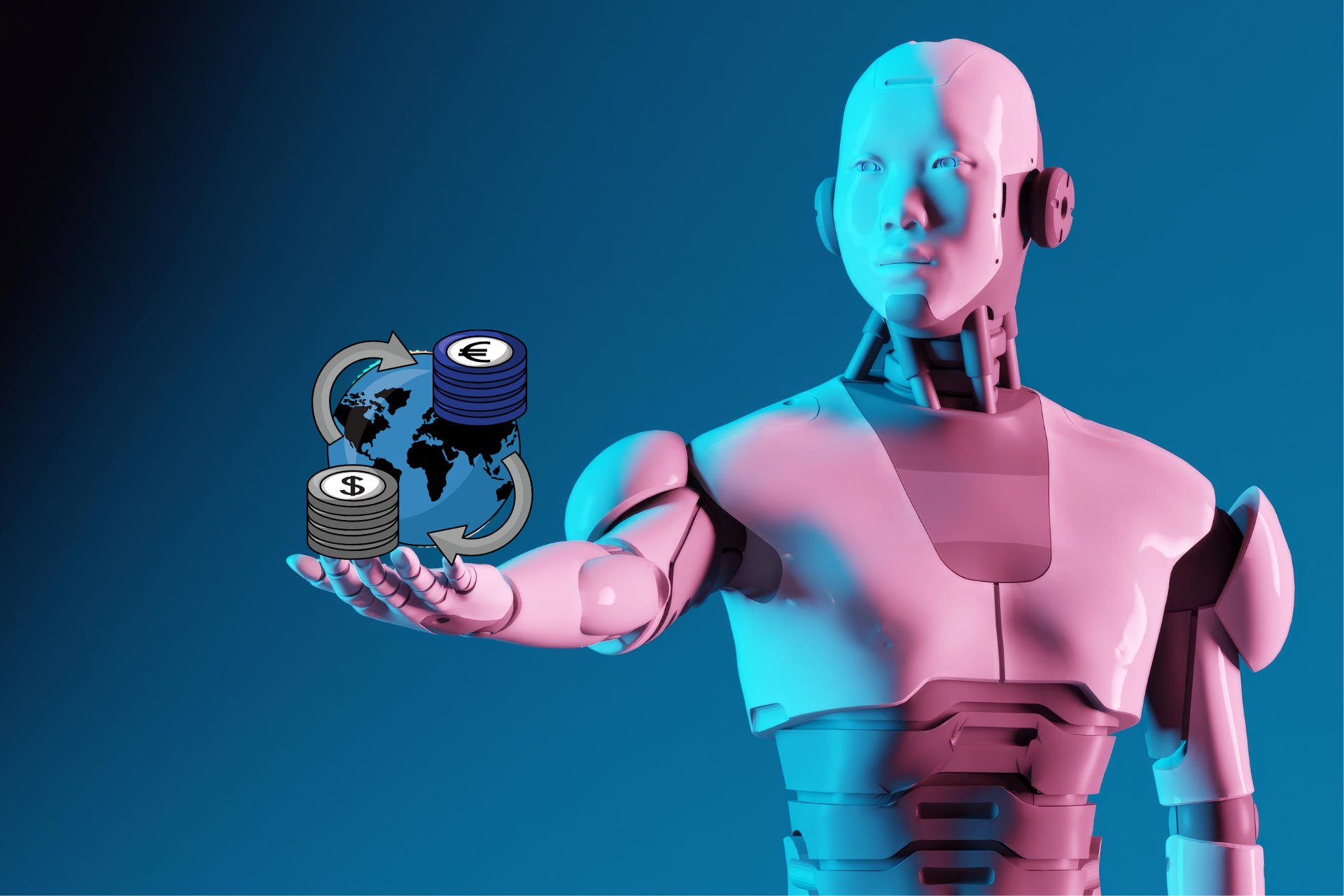A Beginner’s Guide to Automated Trading: Streamline Your Forex Strategy
Automated trading in Forex refers to the use of computer programs and algorithms to enter and exit trades based on predefined rules or strategies. These programs, often known as trading bots or expert advisors (EAs), execute trades without the need for human intervention, allowing traders to capitalize on market opportunities 24/7.
How Does Automated Trading in Forex Work?
Automated trading systems (ATS) rely on technical analysis, where historical price data, indicators, and patterns are analyzed to forecast future price movements. The systems operate based on specific trading rules, which may include:
- Entry and exit points: The exact conditions under which trades should be initiated or closed.
- Risk management parameters: These include stop-loss levels, take-profit targets, and position sizing.
- Trade execution: The system sends buy or sell orders to the market when the predetermined criteria are met.
For example, a trader might program a bot to buy EUR/USD when the 50-day moving average crosses above the 200-day moving average and to sell when the reverse happens.
Benefits of Automated Forex Trading
1. Speed and Efficiency: Automated trading systems can execute trades in milliseconds, faster than any human could manually. This is crucial in the fast-moving Forex market where prices can fluctuate rapidly.
2. Emotion-Free Trading: Emotions like fear and greed often hinder traders from making rational decisions. Automated trading eliminates these emotions, ensuring that the strategy is followed precisely.
3. Backtesting Capability: Most automated trading platforms allow traders to backtest their strategies using historical data. This helps determine the viability of a strategy before using it in live markets.
4. Consistency and Discipline: Humans may deviate from their strategy in response to market volatility. Automated systems strictly follow the predefined strategy without deviation, maintaining discipline in trading.
5. 24/7 Trading: The Forex market operates 24 hours a day, and an automated system can trade around the clock without needing breaks or sleep.
Risks and Considerations
1. Over-Optimization: Traders might over-optimize their system for historical data, creating a strategy that performs well in the past but poorly in live markets due to changing conditions.
2. Technical Issues: Automated systems are reliant on technology, and issues like internet outages, server crashes, or bugs in the program could lead to missed trades or erroneous orders.
3. Lack of Flexibility: Automated systems may fail to adapt to unexpected market events, such as news releases or economic shocks, that require human judgment.
4. Cost: While some trading platforms offer built-in bots, creating a custom automated trading system or buying a high-quality bot can be expensive.
Getting Started with Automated Forex Trading
Automated Forex trading can be highly rewarding if approached strategically. Here’s a detailed step-by-step guide to help you get started:
1. Understand Automated Trading Basics
Before diving in, it’s important to fully understand the mechanics behind automated trading. Automated trading involves using software, algorithms, or bots that can automatically execute trades based on pre-set rules or market conditions. These systems can trade 24/7 without human intervention, taking advantage of market opportunities efficiently.
To start, familiarize yourself with concepts like:
- Technical Indicators: These are tools used to analyze price movements, such as moving averages, RSI, and Bollinger Bands, which automated systems use to determine trade entries and exits.
- Trading Algorithms: Predefined rules that dictate when and how to execute trades.
- Risk Management: Automated systems can implement risk controls like stop-loss and take-profit levels, crucial for preserving capital.
2. Choose a Trading Platform
Your trading platform is the backbone of your automated trading journey. Look for a platform that offers reliable execution, flexibility, and the ability to backtest strategies.
For instance, ForexHero is a powerful trading platform designed for both beginner and advanced traders. It provides a user-friendly interface, supports automated trading, and comes with a range of advanced tools to optimize your strategies. It helps you automate your trading decisions while offering insights to enhance your performance.
3. Develop or Select a Trading Strategy
At the core of any successful automated trading system is a solid strategy. You can either:
- Develop Your Own Strategy: If you’re experienced with trading, you can code your own algorithm based on your personal trading rules and indicators. You’ll need to decide on key factors like entry/exit points, risk tolerance, and trade frequency.
- Use Pre-Built Strategies: Many platforms offer pre-built algorithms or bots that you can lease or buy. These strategies are developed by professional traders and can be easily implemented on your trading platform.
Regardless of which approach you choose, ensure that the strategy fits your risk appetite and market conditions.
4. Backtest Your Strategy
Once you’ve developed or chosen a strategy, backtesting is a crucial step. This involves running your trading strategy through historical market data to see how it would have performed in the past.
Key factors to test include:
- Performance in Different Market Conditions: Test how your strategy performs in trending, volatile, and sideways markets.
- Risk Management Efficiency: Ensure the stop-loss and take-profit settings are effective in preserving capital.
- Profitability: Review the overall profit potential of the strategy over time.
Backtesting helps you refine the system and ensure it’s viable before you risk real money.
5. Set Up and Configure the System
After backtesting, configure your trading system for live trading. Depending on your platform, you will need to:
- Set trade parameters like position size, risk levels, and entry/exit rules.
- Decide on any notifications or alerts for when trades are executed or if certain conditions arise.
- Configure your system to run on specific markets and timeframes.
6. Start with a Demo Account
Before going live, it’s highly recommended to test your strategy on a demo account. This allows you to simulate real market conditions without risking any capital. A demo account gives you hands-on experience in using your automated trading system and ensures that it works as intended.
Platforms like ForexHero offer demo accounts, so you can refine your strategy, practice trading, and become familiar with the system before trading live.
7. Monitor and Adjust Your Strategy
Even though automated trading can run independently, it’s still important to monitor your system from time to time. Market conditions can change, and a strategy that worked in the past may not always remain effective.
You should:
- Regularly Review Performance: Keep an eye on performance metrics, such as the win rate, drawdowns, and average return.
- Update or Optimize Your Strategy: Periodically adjust your algorithm to reflect current market trends or changes in your risk tolerance.
- Stay Informed About the Market: Automated trading doesn’t replace the need for market awareness. Stay updated on market news, economic events, and any other factors that may affect your trades.
READ MORE:
Key Factors to Understand Before Starting Live Forex Trading
Forex trading Bots: Unveiling Potential & Limits
Conclusion
Automated trading in Forex has revolutionized how traders engage with the markets, offering efficiency, emotion-free decision-making, and the ability to trade 24/7. However, to make the most of automated trading, it’s essential to choose a reliable platform and implement a well-tested strategy that adapts to evolving market conditions.
For those who are new to automated trading or want to enhance their trading experience, platforms like ForexHero offer a user-friendly way to explore automated strategies. With easy-to-use tools and insights, traders can start automating their trades with confidence, helping them take their Forex journey to the next level.
Disclaimer
Any information provided in this article is not intended to be a substitute for professional advice from a financial advisor, accountant, or attorney. You should always seek the advice of a professional before making any financial decisions. You should evaluate your investment objectives, risk tolerance, and financial situation before making any investment decisions. Please be aware that investing involves risk, and you should always do your own research before making any investment decisions.

